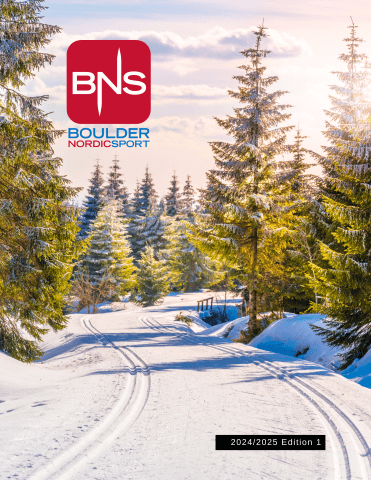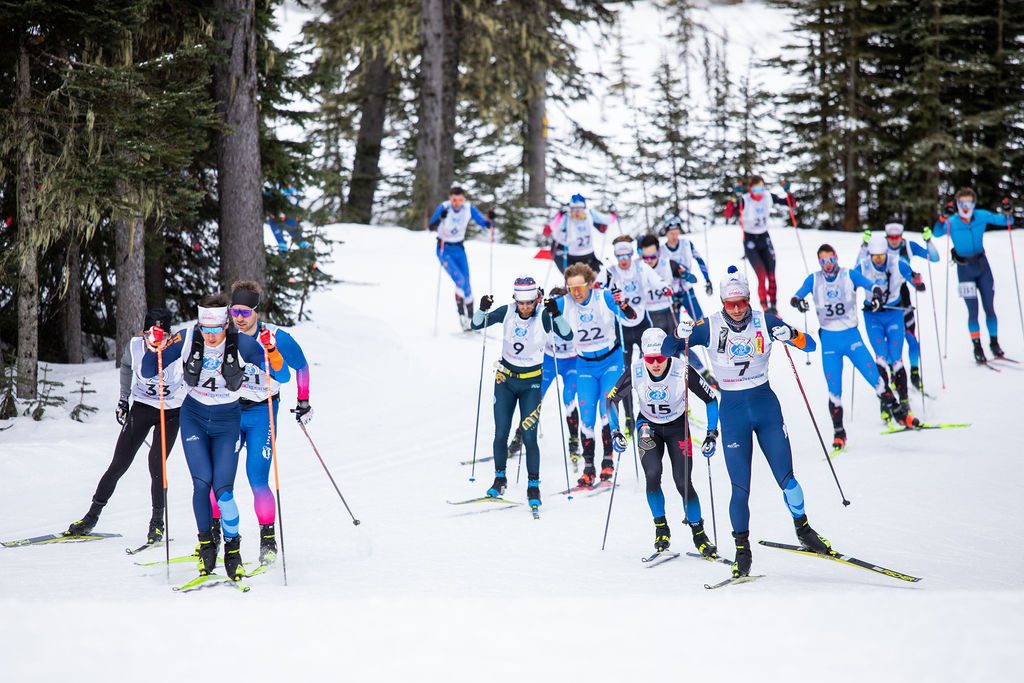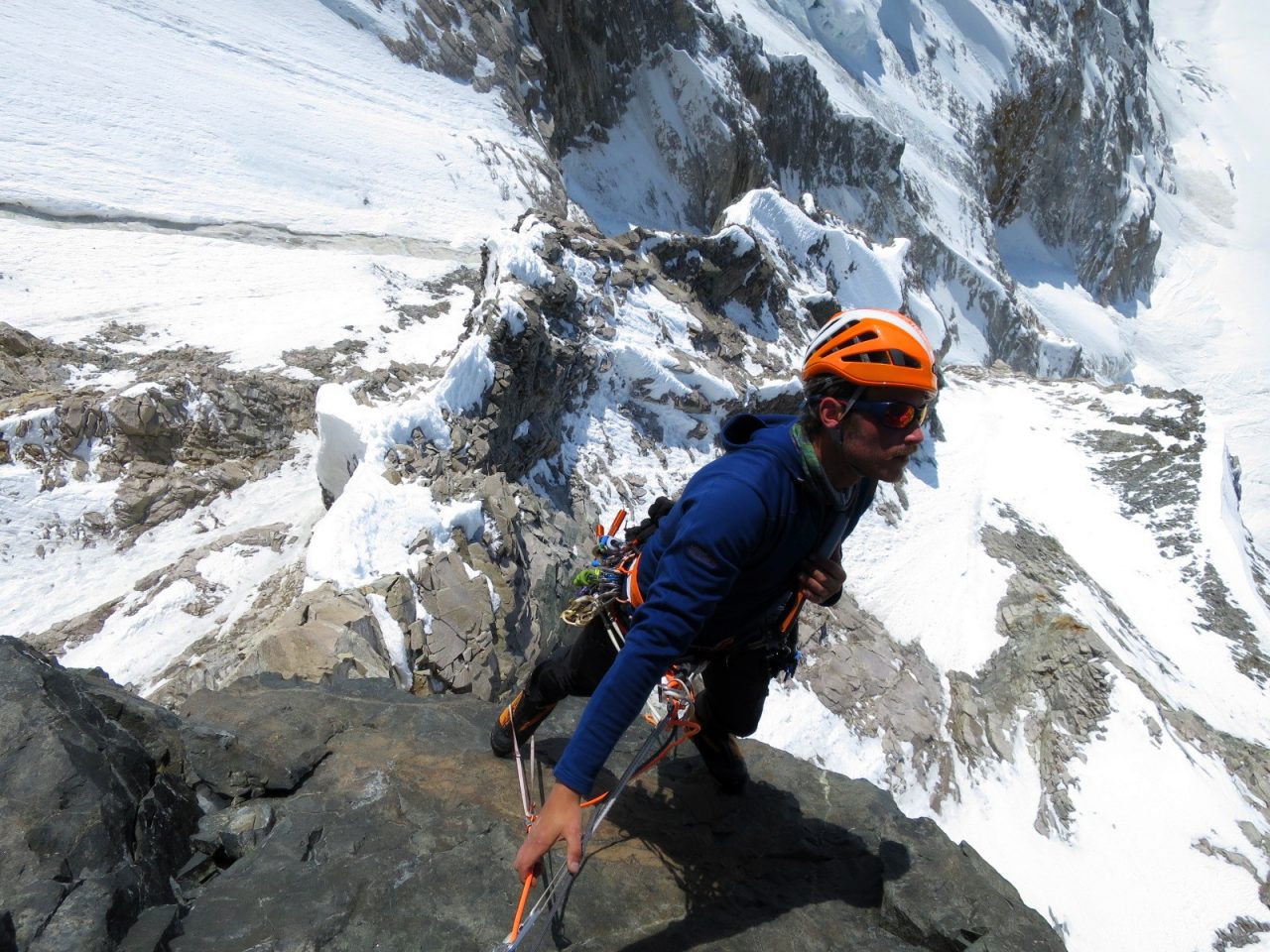
Walking down the street in Bend, Oregon, or perhaps sipping a curated latte, the mustachioed Graham Zimmerman looks like he’d fit right in as a Brooklyn creative. Svelte sartorial taste? Check. An overactive mind capable of wordsmithing and capturing raw visuals as a film-maker? Check.
Admittedly, Zimmerman could discover a fine calling for himself immersed in big-city life.
But, for every Yin there’s a Yang. During certain parts of the year, you’re as likely to find Zimmerman high in the Karakoram mountains as you are in front of an editing suite crafting a film or ruminating on a coffee roast. The 34-year-old Zimmerman is in fact a wizened alpinist. And in an over-mapped, over-way-pointed world, he’s primarily keen on ascending mountains via new routes. Something in the climbing world called first-ascenting.
As with most sporting disciplines, alpinism recognizes its own version of the biggest, the baddest, and the boldest with an award called the Pilot D’or – “The Golden Axe”. Considered the highest achievement in mountaineering, Zimmerman was short-listed for the award in 2015, and won in 2020 as part of a team that first-ascended the South East Face of Link Sar (7041m, M6+ WI 4 90°, 2300m) in the Pakistani, Karakoram. What you need to know about the alpine specific nomenclature rating the climb is this: it’s big, bad, and bold.

Although Bend and its surrounding mountains have alpine-relief, they are not considered a traditional hot-spot for alpinists – the ice climbing is nearly non-existent and the high-peak’s rock trends toward wobbly Jenga tower unstable. Places like the Tetons and Estes Park are alpinist attractants. Historically, not so much Bend.
“I am a professional mountain climbing athlete,” said Zimmerman. “As part of my training for that I do a lot of uphill travel. And an important part of training for that is large volume training – that means more time keeping my heart rate within certain boundaries while moving.”
With knees of a sixty-year-old, Zimmerman discovered skate skiing was his ticket to boundless trails and controlled intensity zones all while minimizing knee impact.
“Skiing here at Mount Bachelor has proved to be an amazing tool,” Zimmerman said. “And so this morning, for example, I was out at Bachelor, pulling up at 7 am when they opened the gate for Covid parking. I put on my touring skis and skinned up and down the cone feature. I did about 4500 feet of uphill skinning, along with skiing back down, then I went back to the car, drank a little bit of coffee, swapped out my touring boots for my skate boots, grabbed my skate skis, and skate skied for about an hour and a half through the Bachelor Nordic complex.”
Zimmerman is a skate-skiing neophyte drinking in technique nuances. He, like most in the cross-country ski tribe, sees it as a means to stay fit and healthy, but also move semi-effortlessly through the forest.
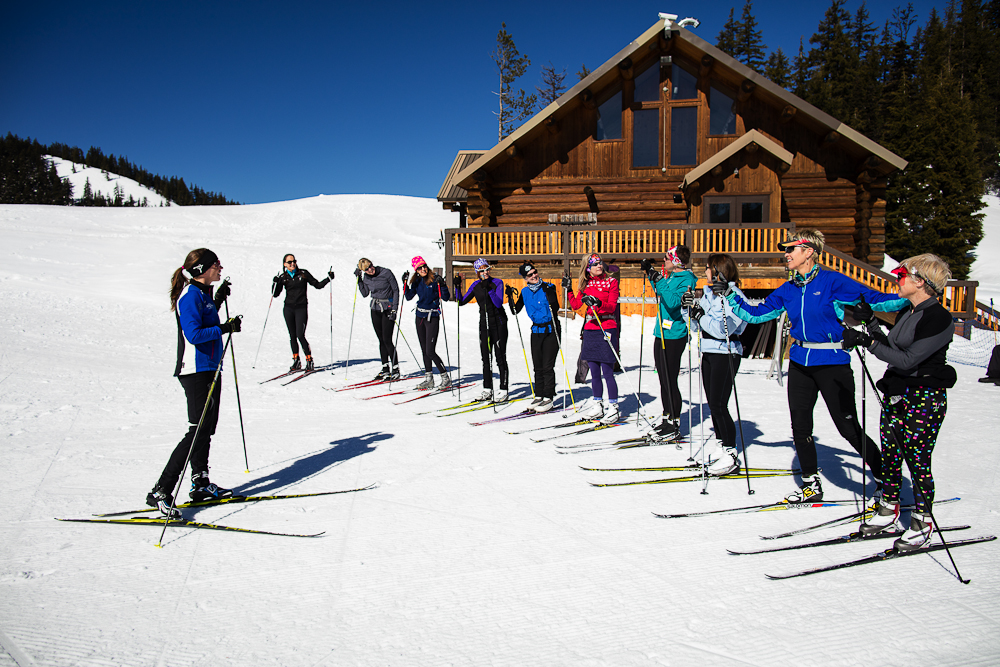
“I feel like skate skiing is something that has a very steep learning curve, not too dissimilar from something like surfing,” he said. “But there’s a moment that came for me and I think it comes for a lot of people, where you find yourself generating speed, generating momentum. There’s kind of this moment where you’re like, ‘Oh, I get it’. As soon as I felt that, I knew this was going to be something that I would be doing for the rest of my life.”
Here’s the thing: it’s rare that any climber, despite how popular culture might assign it, has a “deathwish”. For Zimmerman, that “rest of my life” he refers to is meant to be a long one. Sure, risk is part of everyday life, and perhaps even more so for those spider-manning up a peak poking into the upper troposphere, but Zimmerman is keen for the long-term high-fulfillment existence.
“Here are a few equations with which I am currently working,” said Zimmerman as he posited his notion of exposure to risk. “I am an expedition alchemist, and that means the baseline risk I am engaging with certainly has the potential to be very high. And so while I am continuing to prepare for objectives like this summer when I am going to the Karakoram to try something big and hard, my risk profile will go up pretty dramatically while I am there. I will spend the entire summer managing that risk. My goal, in particular, now that I am a little older and my prefrontal cortex is a little more developed, is to reduce my risk during the rest of the year, so that my overall annual risk profile can go down.”
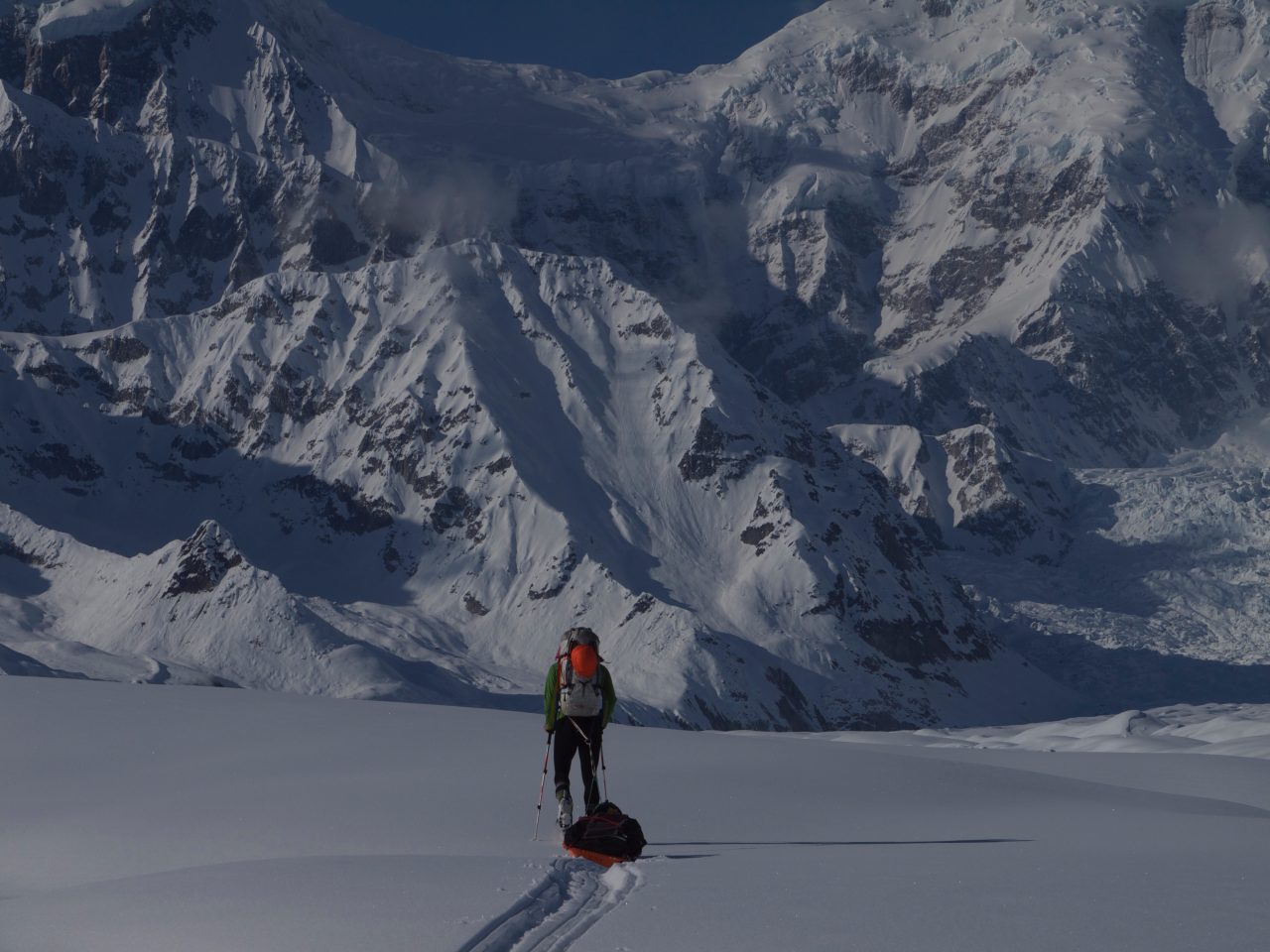
What you won’t find Zimmerman doing is free soloing or climbing into and descending high avalanche terrain near Bend. He can climb safely at nearby Smith Rock, cruise limitless miles of single track or gravel, ski-mountaineer when the snowpack is stable (which it most often is), go to the climbing gym, and of course, skate ski at the Mount Bachelor Nordic Center. All these activities, in the aggregate, have a relatively low-risk factor.
“That’s something that is of value to me,” Zimmerman explained. “I’m fastidious about managing my risk profile when I am preparing for these big expeditions to places and routes that are considered to be some of the hardest alpine climbing in the world. I am doing so in a way that I am not increasing my risk at home, and that, I believe, is making it more likely that during my entire year, I am likely to survive.”
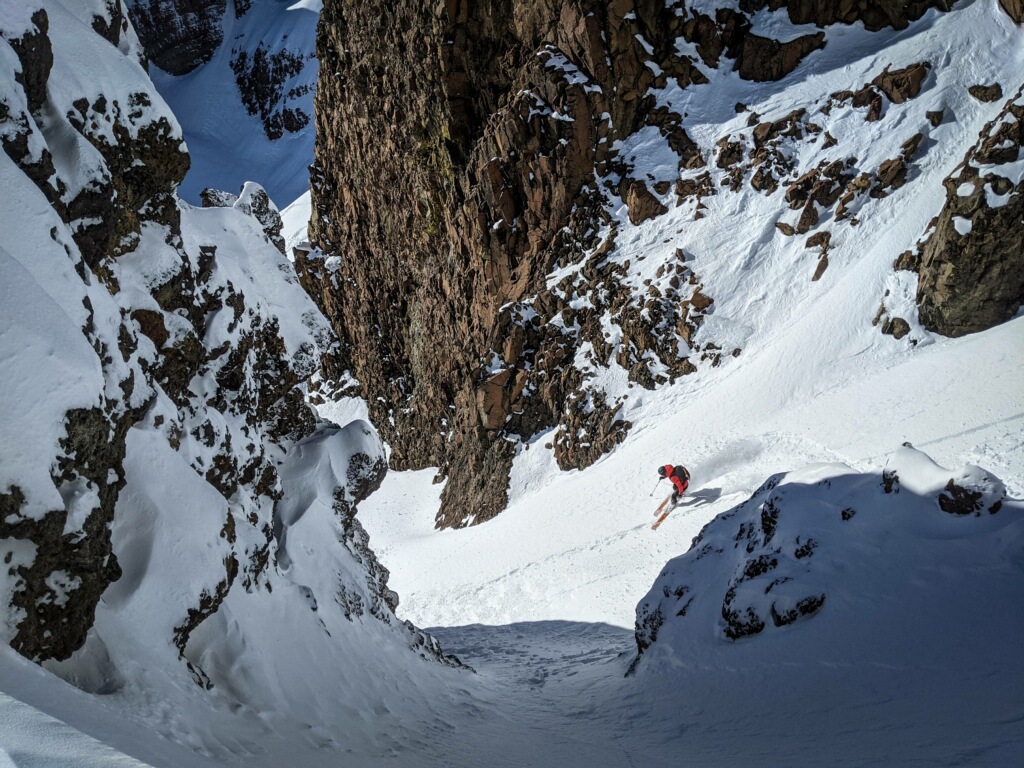
Sunrise over the Three Sisters Wilderness with a kiss of alpenglow on the peaks is often when Zimmerman keeps this all in balance one side of the skate ski “V” at a time. Zimmerman could be king of many proverbial hills here in Bend. He’d rather be humbled at the Mount Bachelor Nordic Center zipping down Oli’s Alley or simply working on balance techniques on the oval. The cool thing, Zimmerman’s risk for trying something new and being imperfect is high. Skate skiing at Mount Bachelor suits this expedition alchemist and his low-risk calculus when in Bend.
“There’s so much value in starting something new,” he said of the gift that has been skate skiing. “It’s not only in terms of checking your ego and keeping yourself in line but also, for me, making incremental improvements in climbing is really hard. It takes a lot of effort to improve 1%. Whereas doing something new – like skate skiing, I see improvement every time I go out. I’m improving something like 15% per year or more. That’s fine. You know, being crappy at something is hard but getting better at something is fun.”


